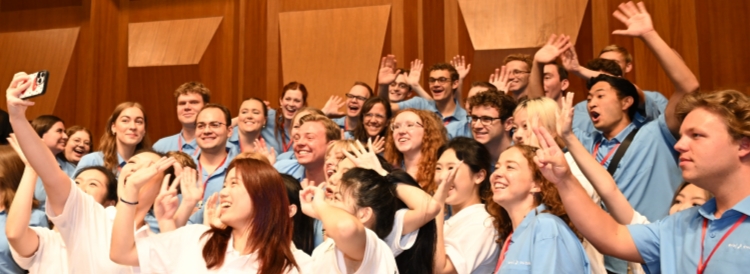


Visitors stroll through the 2025 Fuzhou Intangible Cultural Heritage Fair.
As the Double Ninth Festival approached, Fuzhou's Shangxiahang Cultural Scenic Area came alive with bustling crowds, lively performances and the aroma of local delicacies.
From Erlongbo Glutinous Rice Balls and jasmine tea to dazzling water dance shows, the 2025 Fuzhou Intangible Cultural Heritage (ICH) Fair offered a feast for the senses — celebrating craftsmanship, creativity and community.
Visitors wandered among displays of woodcarving, lacquer art and velvet flowers, while a popular Traditional Chinese Medicine (TCM) zone provided wellness consultations and therapies, adding a soothing touch to the festive atmosphere.
Also known as Chongyang Festival, the Double Ninth Festival is an occasion long celebrated to honor and show respect for the elderly. It falls on the ninth day of the ninth month on the traditional Chinese calendar.

Visitors experience the Traditional Chinese Medicine wellness booth.
Held from October 24 to 26, the event marked the grand finale of the 2025 Fuzhou ICH Fair and Artisan Market Series, hosted by the Fuzhou Municipal Bureau of Culture and Tourism.
Throughout the year, three themed fairs, Qixi Festival, Mid-Autumn Festival and Double Ninth Festival, wove heritage into the fabric of modern city life under the model of "Heritage + Festival + Tourism". With interactive showcases, live performances and creative markets, these events transformed traditional festivals into vibrant urban spaces where people could see, taste and experience living heritage.
This year's series also embraced innovation and youth culture. Creative installations, limited-edition crafts and modernized designs of lacquerware, tea sachets and woodcarvings infused traditional art with a fresh contemporary appeal. Even time-honored brands like Erlongbo introduced playful fusion creations such as glutinous rice ball coffee, making intangible heritage more fashionable and shareable among young audiences.

Yang Xuede, Fuzhou woodcarving ICH inheritor, demonstrates his craft on-site.
Altogether, more than 50 heritage bearers presented nearly 100 ICH projects, attracting tens of thousands of visitors to Fuzhou's historic core and stimulating local cultural consumption.
"Intangible heritage carries our roots and spirit, and it embodies Fuzhou's cultural confidence," said a representative from the Fuzhou Municipal Bureau of Culture and Tourism.
Looking ahead, Fuzhou plans to further integrate intangible heritage with tourism, the nighttime economy and creative industries, shaping a distinctive urban brand where tradition and modernity thrive together.
